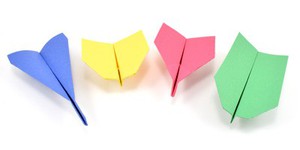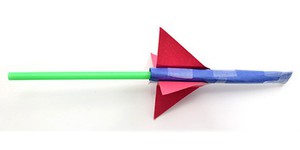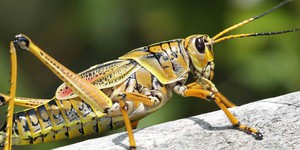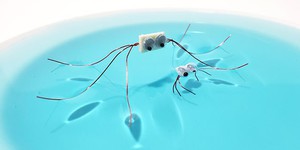Third Grade Lesson Plans (55 results)
Science Buddies' third grade science projects are the perfect way for third grade students to have fun exploring science, technology, engineering, and math (STEM). Our third grade projects are written and tested by scientists and are specifically created for use by students in the third grade. Students can choose to follow the science experiment as written or put their own spin on the project.
For a personalized list of science projects, third graders can use the Science Buddies Topic Selection Wizard. The wizard asks students to respond to a series of simple statements and then uses their answers to recommend age-appropriate projects that fit their interests.
Let us help you find a science project that fits your interests, with our Topic Selection Wizard.|
Select a resource
Sort by
|
Lesson Plan
Grade: 3rd-5th
10 reviews
Teach your students about the engineering design process with this fun lesson plan. They will design and build the tallest possible tower using nothing but paper and tape, but there's an additional twist on this classic activity. The tower must support a heavy weight at the top without collapsing! Teachers, note that middle school and high school versions of this lesson plan are also available. The 2021 Engineering Challenge is over, but you can still try this fun lesson with your students,…
Read more
NGSS Performance Expectations:
Lesson Plan
Grade: 3rd
17 reviews
Help the budding meteorologists in your classroom learn how to measure wind speed by building their own anemometers (wind speed meters) with paper cups and straws. Then do a simple experiment in which students change the "wind" speed using a fan and measure how fast their anemometer spins.
Read more
NGSS Performance Expectations:
New
Lesson Plan
Grade: 6th-9th
In this lesson plan, students will model the complex biologic manufacturing process. First, they will model the cellular expansion process that occurs in a bioreactor. Then, students will lyse the cells to isolate the proteins from the dyed cell debris. Lastly, they will model the advanced filtration process to purify proteins so they can be used as medicines.
Read more
NGSS Performance Expectations:
Lesson Plan
Grade: 3rd-5th
5 reviews
Vibrobots are tiny robots powered by a vibrating motor, like the type found in cell phones. In this lesson plan, your students will learn about engineering design as they build their own vibrobots from craft materials. No previous experience with robots is required!
Read more
NGSS Performance Expectations:
Lesson Plan
Grade: 3rd-5th
24 reviews
Are paper airplanes a nuisance in your classroom? They don't have to be! Those distractions can be a constructive learning opportunity: use them to teach your students about the engineering design process. In this fun lesson, you will be the "customer" ordering a paper airplane, and your student teams will be engineering companies that will manufacture planes. Before they start making planes, they need to define the criteria and constraints of this engineering problem.
Read more
NGSS Performance Expectations:
Lesson Plan
Grade: 3rd-5th
25 reviews
This lesson will introduce your students to the scientific method using a fun, hands-on activity.
A middle school version of this lesson plan is also available.
Read more
NGSS Performance Expectations:
Lesson Plan
Grade: 3rd-5th
4 reviews
There are many different ways to make slime. In this lesson plan, your students will use the engineering design process to design their own slime product. They will need to decide on the desired properties for their slime and then experiment to find the best recipe.
Read more
NGSS Performance Expectations:
Lesson Plan
Grade: 2nd-5th
8 reviews
There are thousands of species of insects in our world, and each are adapted to survive in their habitat. In this activity, students will learn what an insect is and what some of their adaptations are. Then they will put their knowledge into play by "creating" an insect that is adapted to live in their assigned environment.
Read more
Lesson Plan
Grade: Kindergarten-5th
3 reviews
In this fun engineering lesson plan, your students will build a rocket-catching device to help a falling rocket land vertically without crashing, using simple and readily-available materials.
Middle school
and
high school
versions of this lesson plan are also available. This lesson was part of the 2025 Science Buddies Engineering Challenge.
Read more
NGSS Performance Expectations:
Lesson Plan
Grade: 3rd
How do water striders skip across the surface of the water? What advantage does this give them over other insects that helps them survive in their environment? Your students will find out in this lesson as they build their own insects from pieces of wire, and see which ones sink and which ones float.
Read more
NGSS Performance Expectations:
Lesson Plan
Grade: 3rd
1 review
Everybody and everything that is opaque has a shadow. Shadows are fun to play with because you can change their shape and size or even make them disappear. In this lesson, students will first explore how shadows are made and how their appearance can be changed. Then students will use their gained knowledge to create and perform a shadow play.
Remote learning: Part 1 on this lesson plan can be conducted remotely. The Engage section of the lesson can be done over a video call, then students can…
Read more
NGSS Performance Expectations:
|















